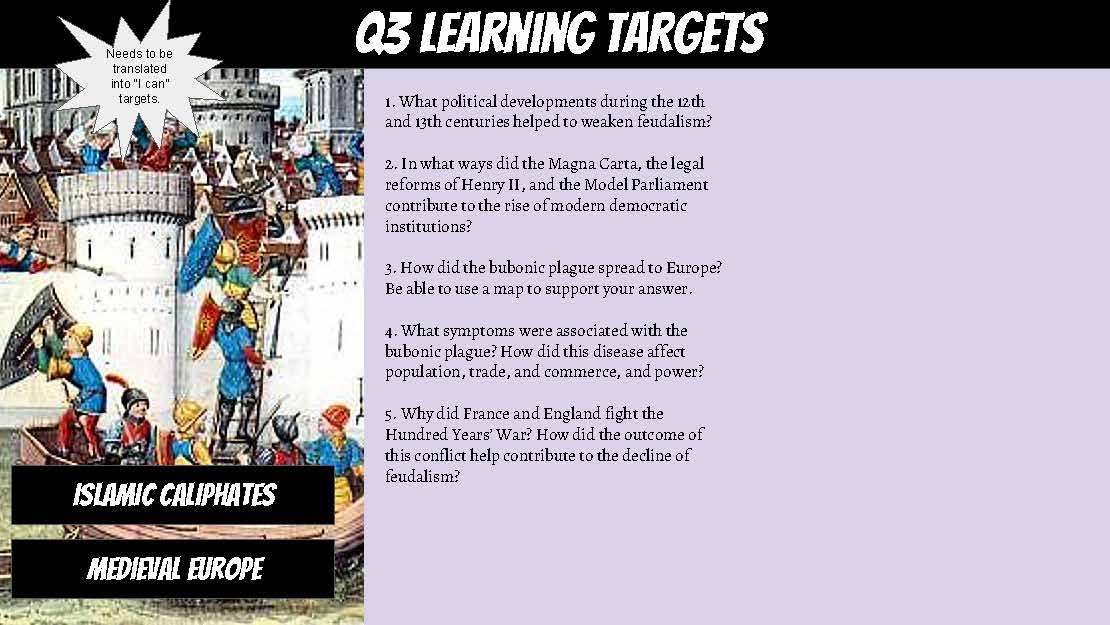C. Humanities Course Design
In 2017, I presented these ideas for a Humanities course. My goal was to create some guiding documents for designing an approach to blending the content of Language Arts and Social Studies into a cohesive Middle Grade Humanities experience for the students that made learning World History attainable and fun.
Creating a Vision for Humanities
The spirit of this presentation is to express the strengths of a unified Humanities experience. My goal is to articulate how a fully integrating Language Arts and Social Studies would amplify the strengths of each course. Below is a description of how deeply interconnected courses could provide clarity to our practices and allow us to focus on what provides rewarding learning experience for students.
Designing Meaningful Learning
My overreaching goal in this presentation was to create a way for students to engage with history that they might consider “awesome.” After asking students what they were interested in, I decided to shape the course idea around a hypothetical “Model United Empires” set in the past. I gathered the various projects and assignments that we were doing as a grade level and rebranded them into a series of projects that built on each in a way that prioritizes inquiry, problem solving skills, and meaningful learning.
Using Visual Pacing Guides
Pacing guides can be daunting, especially if they are loaded with an overwhelming amount of details. Below was my attempt to visually express the pacing of a course in a way that could allow maximum information to be displayed clearly and functionally. Granted, I don’t think that I accomplished that task! The visual pacing guides are still quite confusing, but do I think that this was a good first step in a more creative and visually pleasing way to pace courses that could support collaboration and communication.
Mapping Standards
Below is a presentation about how standards might be covered in a Humanities course that blends Social Studies and Language Arts fluidly. My starting place for content-specific standards in Social Studies was the California Common Core State Standards. I also focused on a possible pacing for power standards. While it would not be realistic to cover all standards in a year, I put all standards in a place where they might logically fit so that we could emphasize, de-emphasize, or eliminate as necessary.
Making Reading Meaningful
When students read, they learn. There is a nearly magical connection between students spending time with a story and picking up skills, information, and a spirit of curiosity. These were some thoughts that I had about how to increase meaningful reading in the classroom.
Using Rotating Centers
I have been curious about how to better integrate the rotating centers of younger years into an older classroom. Why would rotating centers stop working as students age? If done with purpose and age-appropriate challenges, wouldn’t they capture the interest of students, build a responsible ownership over their education, and allow for personal interactions between teacher and student, just like at younger ages? Below are my thoughts about how some Language Arts skills in a Humanities classroom might be smoothly transitioned to rotating centers.








































































































































